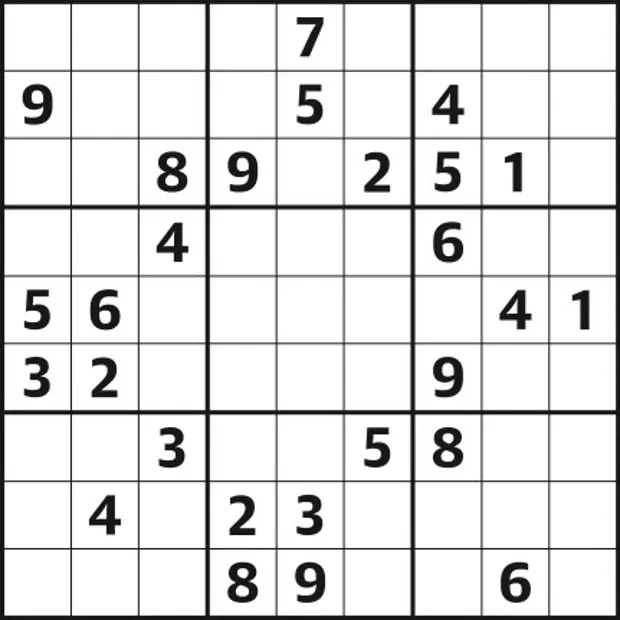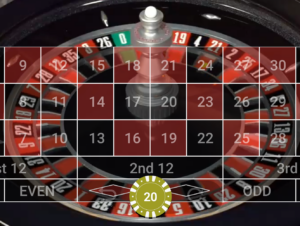Sudoku is one of the most popular puzzle games. To complete a Sudoku puzzle, you must fill a 9×9 grid with numbers such that each row, column, and 3×3 square has all digits from 1 to 9. Sudoku is a great mental exercise. You will see gains in your ability to focus and think clearly if you play Sudoku daily. Your favorite online game will become a free Sudoku puzzle.

History of Sudoku
The origins of Sudoku may be traced to the Swiss mathematician’s game “Latin Squares” from the 18th century, and some of the first newspaper crossword puzzles were printed in France in 1895. The contemporary Sudoku game, however, as we know it today, was created by Howard Garns, a freelance puzzle creator from Connersville, Indiana, in the United States. It was first published in the Dell Pencil Puzzles and Word Games magazine in 1979. Since it required inserting individual digits into vacant spaces on a 9 × 9 grid, the puzzle was known as “Number Place.”
The term “Sudoku,” which is short for the more extensive Japanese phrase “Sji wa dokushin ni kagiru,” which means “the numbers are confined to one occurrence,” was given to the game when it originally debuted in Japan in 1984. In Japan, where more than 600,000 Sudoku publications are purchased monthly, sudoku remains quite popular.
Since crossword puzzles in the Japanese language don’t function very well, Sudoku puzzles were much more successful in Japanese society. This is one of the reasons why Sudoku puzzles are so adored there. Additionally, given that millions of Japanese people travel long distances for work or school by train or bus and must pass the time while waiting for the next stop, it is no surprise that they like solving puzzles.
A New Zealand judge by the name of Wayne Gould, who was on vacation in Tokyo in March 1997 when he found Sudoku in a bookshop, is credited for bringing Sudoku “back” to the West. He rapidly became a passionate Sudoku aficionado and spent the next six years creating computer software that could produce Sudoku problems.
The Conway (New Hampshire) Daily Sun was the first American newspaper to print Sudoku puzzles in 2004, and The Times of London started publishing them in 2005. Sudoku has spread over the globe in the last ten years. The first World Sudoku Championship took place in Italy in 2006, and the 2013 edition will be in Beijing.
Mathematics of Sudoku
When discussing traditional Sudoku here, variations like jigsaw and hyper are not considered.
Completed Sudoku grids are a subset of Latin squares with the added characteristic that no nine-block (or nine-box) configuration has any repetitions of the same value. It has been shown that a first-order formula that does not include blocks is valid for Sudoku if and only if it is valid for Latin squares; hence the connection between the two theories is clear.
It is well-known that the NP-completeness of the general problem of solving Sudoku puzzles on n2n2 grids of nn blocks. Most 99 problems can be solved rapidly by computers using algorithms like backtracking and dancing links, but these methods reach their limitations when n rises due to combinatorial explosion. Recasting a Sudoku puzzle as a coloring issue for a graph is possible. When given a piecemeal 9-coloring graph, the goal is to complete that 9-coloring.
In January 2012, it was established that a valid Sudoku requires at most 17 clues, and in September 2013, it was reaffirmed. Japanese fans have discovered most of the over 49,000 Sudokus using 17 clues. There are Sudokus with 18 clues and rotational symmetry, and at least one Sudoku with 18 clues, two-way diagonal symmetry, and automorphism has been discovered.
If two instances of two numbers are missing from cells occupying the corners of an orthogonal rectangle and precisely two cells are within one region, the numbers can be assigned two ways. This is the maximum number of clues that can be provided without rendering a unique solution (four short of an entire grid), which is 77. Most Sudoku variations have the same upper bound for all Latin squares.
Approximately 6.671021, or 6,670,903,752,021,072,936,960, are possible grid configurations for the basic 99 Sudoku puzzle (sequence A107739 in the OEIS). About 1.2106 times as many 99 Latin squares as that. Other grid sizes have also been included; please go to the primary page for further information. After accounting for symmetries like rotation, reflection, permutation, and relabeling, it has been proven that there are only 5,472,730,538 fundamentally distinct solutions[37] (sequence A109741 in the OEIS).
The number of minimum 99 Sudoku problems is unknown, although the number of full Sudoku grids is known. There are approximately (with a relative error of 0.065) 3.10 1037 minimal puzzles and 2.55 1025 nonessential identical minimal puzzles, as shown by statistical methods and a puzzle generator.
Sudoku Competitions
There is already a Sudoku World Championship Competition today. Its propensity for problem-solving led many people worldwide to rank it as the No. 1 logic puzzle in the world, according to a 2005 assessment by the World Puzzle Federation.
The World Sudoku Championship is a global contest, with annual competitions conducted by different nations. Individuals and teams solve over 100 riddles to determine the global champion. Twenty nations took part in the inauguration of these championships, which were held in Lucca, Italy. Each round was timed, and the person who finished the problem the quickest was crowned the winner.
Although it was an exciting event, many competitors admitted to feeling under a lot of strain, particularly at the thought of competing against others and representing their nations.
In many nations, there are also national sudoku competitions where competitors battle to discover who is the greatest and will most likely represent the nation when an international tournament opens up.
There are many Sudoku lovers in India, and “Logic Masters India” often organizes the Indian Sudoku Championship.
Variants of Sudoku
Sudoku has seen several changes in recent years.
- Streamlined Sudoku variations with 4×4 or 6×6 grids are primarily geared toward young audiences for educational reasons.
- Magnified sudoku variants are available, including 1616 with more giant blocks to make it harder.
- There are alphabetical sudoku versions that use letters instead of numbers. There may sometimes be words in these versions concealed in the grid.
- Numerous additional varieties exist, such as Sudoku grids with logical or mathematical limitations or Sudoku with uneven sections.
How to play sudoku with friends
Sudoku Rule № 1: Use Numbers 1-9
A 9 by 9 grid is used to play Sudoku. There are nine “squares” between the rows and columns (3 x 3 spaces). You must fill out all nine slots in each row, column, and square with the numbers 1 through 9, without repeating any numbers. Does it seem complicated? The more previously filled spaces, the simpler the game is to play. The more challenging Sudoku puzzles contain relatively few places already filled in, as you can see from the picture below of an accurate Sudoku grid.
Sudoku Rule № 2: Don’t Repeat Any Numbers
As you can see, 7 of the square’s 9 slots are already filled in in the top left square. Only the digits 5 and 6 are absent from the square. We may use the process of elimination and deductive reasoning to determine which numbers should belong in each empty area by examining which numbers are absent from each square, row, or column.
Sudoku Rule № 3: Don’t Guess
Since Sudoku is a game of logic and reasoning, you shouldn’t have to guess. If you are unsure what to put in a particular spot, keep looking at the other parts of the grid until you find a chance. However, avoid attempting to “force” anything since Sudoku rewards perseverance, understanding, and pattern identification rather than chance or guesswork.
Sudoku Rule № 4: Use Process of Elimination
Since there cannot be a duplicate of the numbers 1 through 9 inside a square, one method of determining which numbers may fit in each area is to apply the “process of elimination” by looking to determine whether other numbers are already contained within each square.
The game of Sudoku has elementary principles, yet it is endlessly diverse with millions of different number combinations and a variety of difficulty levels. But everything is built on the straightforward rules of utilizing numbers 1 through 9, filling in the blanks using inference, and never repeating any numbers inside any square, row, or column.

